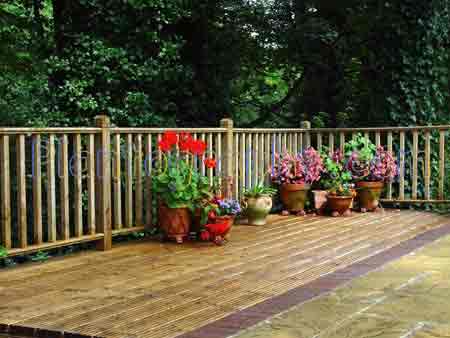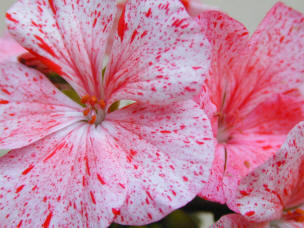Heuchera - The Coral Bells Flower
You can rarely go into a garden centre these days without being accosted by a mass of Heuchera in assorted foliage colours. The foliage being at least semi-evergreen and at best fully evergreen makes these variations more than welcome.
But the common Heuchera in itself also had attractive leaves - usually with silver mottling. The days of the common Coral Bells are numbered it seems, as new variants seem to reach us on a weekly basis. No problems with that for the variations on the main theme are vastly improved as far as ornamental effect is concerned.
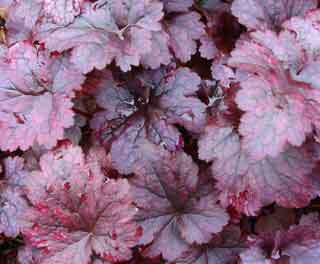 Heuchera was once a cottage garden plant, but where in any event have
the cottage gardens gone to? We now have Heucheras in a whole new range
of foliage and flower colours, and a welcome addition they are.
Heuchera was once a cottage garden plant, but where in any event have
the cottage gardens gone to? We now have Heucheras in a whole new range
of foliage and flower colours, and a welcome addition they are.
Heucheras have always been an accommodating group of plants insofar as lightly shaded areas are concerned, but are also happy in most sunny positions and are reasonably tolerant of dry soils, but are happier in soils that are moist, but not boggy.
In any event they are not happy in a soil which is prone to being very wet throughout the winter. They are members of the overall Saxifragaceae family and share the man growing requirements with other saxifrage members.
The Growth Habits of Heuchera.
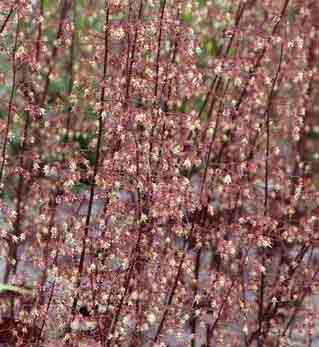 Almost without exception, the Heuchera group form small dense mounds
of foliage with the flower held above on slender nodding stems. The
generally ‘rounded’ leaves are normally lobed – though not sharply.
Almost without exception, the Heuchera group form small dense mounds
of foliage with the flower held above on slender nodding stems. The
generally ‘rounded’ leaves are normally lobed – though not sharply.
Heucheras are not spreading plants – unless by seeding themselves, as they grow from a central woody clump of roots. This clump of roots has the habit of almost pushing the plant out of the ground over time. Mulching around the base of the plants is the way forward, but then every three or four years the plants can be lifted and re-planted back at ground level.
Most of the Heucheras available at garden centres are of the fully hardy type, though can suffer a setback (recoverable) in sever or very wet winters.
Most soil types will suit, but not the very acid peat soils. They are happy in neutral or slightly alkaline soils and welcome a good organic addition of autumn mulches.
Uses for Heuchera.
They are fully at home in the herbaceous border – carefully placed and spaced to get the full advantage of their winter evergreen foliage. They can make an otherwise bare winter herbaceous border a little interesting.
Heucheras make excellent ground cover plants, but you will need to plant them in drifts for they are not natural spreaders by way of creeping stems or habits.
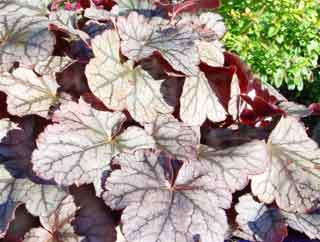 As
they are available in many different foliage – and flower – colours it
might be tempting to plant an assortment to give a patchwork effect.
A ground cover bed underneath a tree of one colour is normally a better
option. Other than good design, different types will grow at different
growth rates whereas a single variety will form a better carpet.
As
they are available in many different foliage – and flower – colours it
might be tempting to plant an assortment to give a patchwork effect.
A ground cover bed underneath a tree of one colour is normally a better
option. Other than good design, different types will grow at different
growth rates whereas a single variety will form a better carpet.
Heucheras make for good container plants on the patio, but take care to plant in good moisture retentive compost, and keep the container out of direct sun, for they soon warm up and create uncomfortable root conditions in the warm soil. This is true of most plants that are planted in containers.
Propagation of Heuchera.
Heuchera Propagation follows the normal division practiced with perennials is the easy method. Either carry out division in early autumn or early spring – not in mid winter. This is by far the easiest method of Heuchera propagation
They can also be propagated quite easily by growing from seed – best sown in spring and germinated in a coldframe. A heated propagator is neither required nor desired for the propagation of Heuchera. Grow cool.
Problems with Heuchera
The leafy canopy is a good hiding place for all manner of grubs and insects. The one to worry about is the vine weevil beetle. This is especially so of these grown in containers. Tell-tale incisions in the leaves will alert you to the vine weevil activity. Another clue as to the presence of insects, are the birds foraging around and under the foliage in the autumn/winter.
Another small - but irritating - problem of Heucheras, is the fact that some nurseries give them the wrong descriptive name. Whether or not from sheer negligence, or sometimes to give them a more 'localised' name.
Best Selling Gardening Products
Popular Gardening Sections
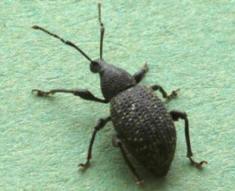
Problems
Identify Weeds in The Garden - How to deal with weeds. Diseases and Pest which harm your garden and plants, learn how to prevent, deter and erradicate your garden problems.
Garden Problems
Pruning
Pruning Guide. Shrubs flower better with correct pruning. Many illustrations and examples of what to do - and when. Includes evergreens, roses, flowering shrubs, spring flowering shrubs and pruning for stem effect. This is our most viewed and comprehensive section,
Pruning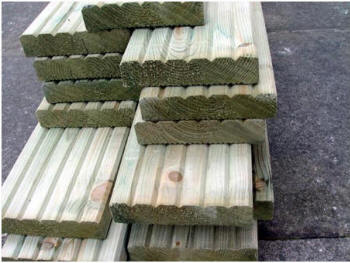
Gardening Businesses
Gardening Businesses listed in the UK counties and USA states. County and State Listings of businesses involved in Garden supplies and services. If you wish to be added to the Directory, please send us your information. Having problems, use the search box
Businesses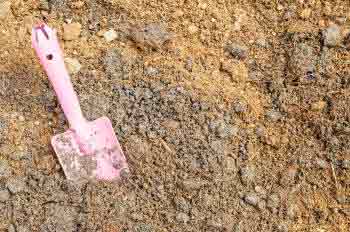
Gardening
In this section you will learn about Gardening Basics, Containers, Landscaping, Propagation and Soil.
Gardening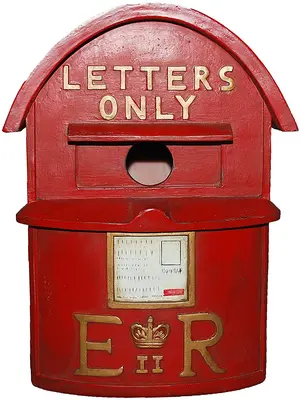
Gardening Gifts
Gardening Gifts and Reviews, Read Before you Buy
- Gardening Gifts Ideas
- Gifts For Her
- Gifts For Men
- Power Tool Gifts
- Cheap Gifts
- Personalised Gifts
- Wildlife Gifts
- Family Gifts

